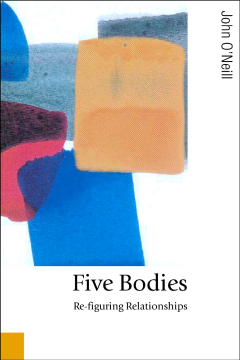
Additional Information
Book Details
Abstract
Five Bodies offers an introduction to some of the most urgent contemporary concerns within the sociology of the body. This new edition (the previous edition was published by Cornell University Press (1985) has been substantially revised and updated to examine how embodied selves and relationships are being re-shaped and re-figured and how the embodied figures of the polity, economy and society represent the contested notions of identity, desire, wholeness and fragmentation.
Table of Contents
| Section Title | Page | Action | Price |
|---|---|---|---|
| * Forward | |||
| I: Development and conflict:The Gender Dimension | |||
| 1. Understanding armed conflict | |||
| 1.1:Introduction | |||
| 1.2:Analysing conflicts | |||
| 1.3:Conflict as a process | |||
| 1.4:A new model of development | |||
| 2. The gender dimensions of armed conflict | |||
| 2.1:Introduction | |||
| 2.2:Women's experience in conflict | |||
| 2.3:Changes in gender relations: power, conflict and transformation | |||
| 3. Implementing gender-sensitive responses to armed conflict | |||
| 3.1:Introduction | |||
| 3.2:Assessment, monitoring and evaluation | |||
| 3.3:Policy considerations in specific conflict-related situation | |||
| 3.4:Partnership issues | |||
| 3.5:Institutional issues | |||
| II Case Studies | |||
| 1. The impact of armed conflict on gender relations | |||
| Cambodia | |||
| Somalia | |||
| Uganda | |||
| 2. The effects of conflict on women | |||
| An overview | |||
| A checklist | |||
| 3. Meeting the support needs of women in conflict situations | |||
| Sri Lanka | |||
| 4. Working with partners on gender issues in conflict situations | |||
| Burma | |||
| Philippines | |||
| 5. The evolution of Oxfam's gender strategy in conflict | |||
| Lebanon | |||
| * References | |||
| * Figures |
